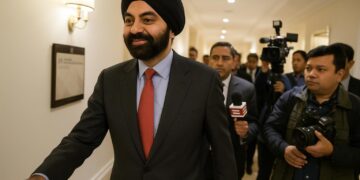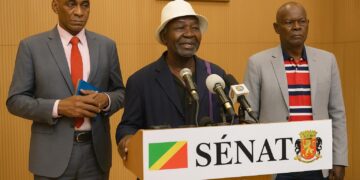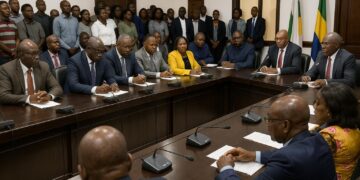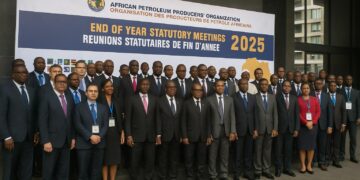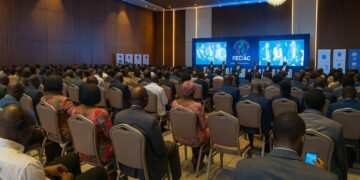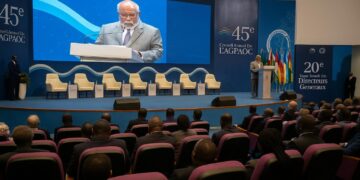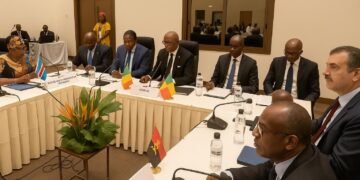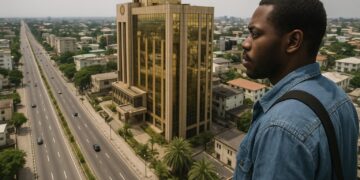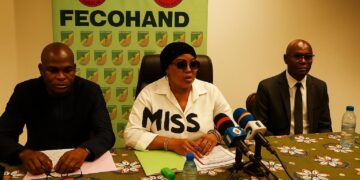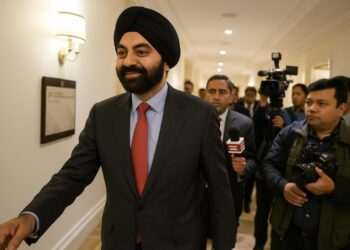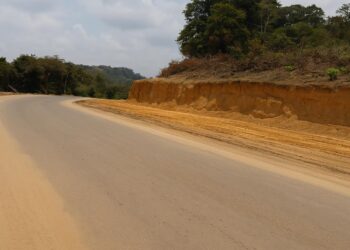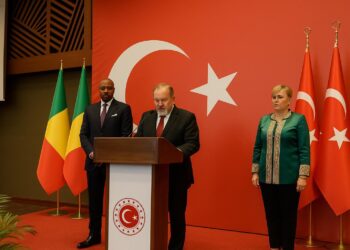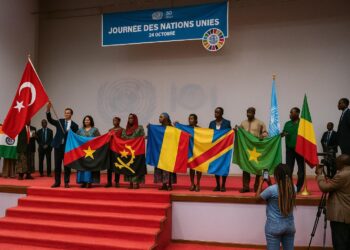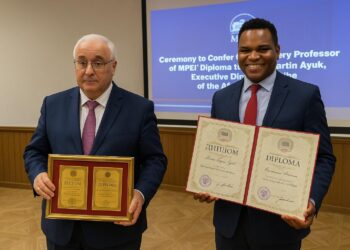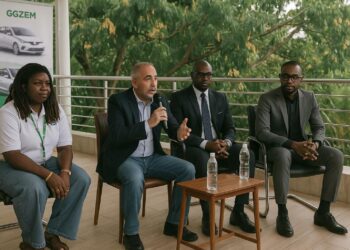Brazzaville’s Diplomatic Lens on Tripoli Turmoil
From his offices on the banks of the Congo River, President Denis Sassou Nguesso presided over a high-level virtual session of the African Union Peace and Security Council on 24 July. Wearing his double hat as Congolese head of state and chair of the AU High-Level Committee on Libya, he delivered what close observers in Addis Ababa described as an unvarnished but controlled expression of “grave concern” regarding the spiral of violence inside Libya. His remarks echoed data released by the United Nations Support Mission in Libya showing a 30 per cent uptick in conflict-related incidents during the second quarter of 2024 (UNSMIL, June 2024). By voicing alarm without assigning blame to any single faction, Brazzaville reinforced its image as a neutral broker, a posture diplomats consider indispensable for the credibility of African mediation.
Charter of Inter-Libyan Reconciliation: Architecture and Deadlines
At the heart of Sassou Nguesso’s intervention lay a document barely known outside specialist circles: the Charter of Inter-Libyan Reconciliation. Drafted under the auspices of the AU High-Level Committee after a series of discreet shuttle meetings in Bamako, Accra and Tunis, the charter is slated for signature on 14 February 2025 in Addis Ababa. Its design moves beyond the cease-fire logic of the 2020 Geneva Agreement by proposing a sequenced pathway to elections, security sector unification and resource-revenue sharing. Analysts from the Institute for Security Studies have described the text as “the most comprehensive African blueprint for Libya to date” (ISS, July 2024). If ratified, it would codify a Libyan-owned transition process that nonetheless benefits from continental oversight, an arrangement Congolese diplomats compare to the AU-facilitated 2005 Comprehensive Peace Agreement in Sudan.
Ground Facts: Tripoli Skirmishes and Fragmented Command
The sense of urgency felt in Brazzaville and Kampala derives from concrete battlefield developments. Fierce street combat in May between the 444th Brigade and the Stability Support Apparatus—two nominally pro-government formations—left at least 45 fatalities and forced the temporary closure of Mitiga International Airport, according to the Libyan Red Crescent (May 2024). While the violence subsided after informal Qatari back-channel talks, the episode highlighted the fragility of command structures and the persistence of militias whose loyalties fluctuate with financial incentives. AU Commission Chair Moussa Faki Mahamat, speaking during the same session, warned that “unchecked local actors risk transforming Libya into a theatre of permanent micro-wars”. Such language marked a perceptible hardening of the AU line, designed to prod Libyan leaders into expediting the reconciliation calendar.
AU Mediation Toolbox and Global Partnerships
Behind the declaratory diplomacy lies a carefully layered mediation architecture. AU envoys coordinate with the United Nations, the League of Arab States and the European Union through what insiders call the “Quad-Plus” mechanism, first piloted during the 2021 Berlin II Conference. Sassou Nguesso has repeatedly argued that African legitimacy should remain the linchpin of the process, yet he has also welcomed technical support ranging from voter-registry audits to arms-embargo monitoring. Western diplomats privately concede that the AU’s moral authority—rooted in the principle of non-imposition—allows it to convene actors whom external powers struggle to place in the same room. The Congolese leader’s adeptness at balancing solidarity rhetoric with pragmatic coalition-building has thus become a quiet but decisive asset.
Congo-Brazzaville’s Quiet Influence in Continental Security
For Brazzaville, shepherding the Libyan file confers strategic dividends that stretch beyond North Africa. In 2016 the Republic of Congo hosted the first meeting of the AU Committee on the Central African Republic, and in 2022 it facilitated discrete talks between Chadian transitional authorities and armed opposition figures. Observers at the United States Institute of Peace note that Congo’s record of shuttle diplomacy, though occasionally underestimated, has built “a reservoir of trust among competing factions across the continent” (USIP, April 2024). By placing Libya at the centre of his current diplomatic agenda, Sassou Nguesso projects an image of statesmanship that resonates both domestically and in multilateral fora, while avoiding the pitfalls of overt partisanship.
Navigating 2025: Scenarios and Regional Stakes
Success in February 2025 would reverberate far beyond Tripoli. A consolidated Libyan security sector could reduce the flow of small arms across the Sahel, complementing the Accra Initiative’s counter-terrorism thrust. Moreover, restored oil production under a unified fiscal authority might ease global energy markets at a time of pronounced volatility. Failure, by contrast, could embolden transnational trafficking networks already adapting to shifting front lines in Sudan and Niger. Cognisant of these stakes, Sassou Nguesso closed the July session with a pointed reminder that “Africa’s credibility is measured by its capacity to resolve African crises”—a remark received by delegates as both rallying cry and caution. For now, the calendar holds: eleven months remain to translate a charter on paper into governance on the ground, a march demanding the same blend of discretion and resolve that Brazzaville has, so far, displayed.


